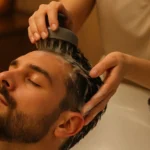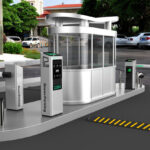What Is the Best Mouse and Mouse Pad for Carpal Tunnel Syndrome? Do you want to know which mouse is best for carpal tunnel syndrome? Your hands are your instruments as a writer. A mild incidence of carpal tunnel syndrome can easily sabotage your capacity to complete tasks. Carpal tunnel syndrome can be painful, causing pain to radiate up and down your wrist and arm. As a result, for home workers and writers, a nice keyboard, a writing desk mouse pad with wrist rest, an ergonomic mouse is crucial equipment. Go to Work Rift to find out everything you need to know.
What is Carpal Tunnel Syndrome?

Carpal tunnel syndrome, also known as carpal tunnel, is the most common entrapment neuropathy. Most often, it occurs in the hand due to compression of the median nerve on the wrist. It typically causes numbness and tingling in the hands and fingers, and weakness and pain in the thumb and index fingers. In many cases, carpal tunnel syndrome is caused by a combination of factors, such as overuse, over-extension, and incorrect postures. Townsville hand therapy is a natural treatment for carpal tunnel syndrome. It is recommended to consult a hand therapist for hands-on treatment. If you have carpal tunnel syndrome, hand therapy will help you restore your range of motion and increase your hand strength.
What Are the Symptoms of Carpal Tunnel Syndrome?
Consult your doctor if you feel you have carpal tunnel syndrome. Carpal tunnel syndrome manifests itself in a number of ways.
Tingling or Numbness
A numbness or tingling sensation in your fingers or hand is a frequent sign of carpal tunnel syndrome. The thumb, index, middle, and ring fingers are frequently afflicted while the little finger is unaffected. Some people describe the sensation as electric shock-like. The sensation can travel from your hands to your wrist and up your arm at times.
Many patients describe feeling this sensation while holding a phone, magazine or steering wheel, or when they are awakened from a nap. After using flat mice, such as the Apple Magic mouse, and keyboards without a wrist support for lengthy periods of time, I developed this syndrome. The numbness grows more consistent over time as someone suffers from this ailment for a longer period of time.
Weakness
Carpal tunnel syndrome can often manifest itself as a more concerning symptom of weakness, causing sufferers to drop objects. The pinching of the thumb muscles, which the median nerve controls is a common cause of this problem. Burning and itching in the palm and thumb, as well as the middle and index fingers are additional symptoms. Sufferers also report having shock-like sensations in one or more fingers. Both your left and right hands may be affected.
Difficulty Gripping
Because the median nerve only controls part of the hand you are most likely to experience symptoms in these areas:
- Thumb
- Index finger
- Middle finger
- Side of ring finger closest to thumb
Carpal tunnel symptoms might worsen with time, to the point where they interfere with your ability to perform daily duties. It can also have a negative impact on the quality of your sleep. Because many people sleep with their wrists bent or compressed symptoms are generally initially recognized at night. Untreated carpal tunnel syndrome can result in a loss of grip strength function (particularly the thumb’s ability to pinch) and permanent muscle damage in extreme cases. If you’re suffering from carpal tunnel syndrome, consult your doctor as soon as possible for guidance and treatment.
Does Mouse Pain Mean Carpal Tunnel?
Many of the office employees we speak with believe that carpal tunnel syndrome is caused by their computer mice or keyboards. While there is evidence that repetitively utilizing the wrist in unusual way may raise the risk of carpal tunnel syndrome there is no definitive evidence that computer work is the cause.
That should not deter you from making an attempt to correctly set up your workspace to reduce your risk of musculoskeletal discomfort. Are you blaming your mouse if you experience symptoms of carpal tunnel syndrome? Is it possible that it’s your keyboard? You may be like the majority of people who claim that sitting at their desk all day or playing video games for hours on end has caused carpal tunnel syndrome. Is this, however the genuine cause-and-effect relationship? Certainly not.
The majority of those who engage in such activities will have hand pain. However, most of the time it’s due to basic muscle tiredness. Carpal tunnel syndrome and muscle weariness are two very different issues.
In fact, you should hope that your discomfort is due to exhaustion rather than carpal tunnel syndrome. This is due to the fact that carpal tunnel syndrome is far more difficult to treat. Mouse (or keyboard) pain is frequently caused by muscles becoming strained. It’s the same as having leg ache from a lot of walking or jogging.
Excessive mouse use can lead to tiredness, which can lead to pain as you continue to use the mouse. The pain is frequently accompanied by numbness or tingling in the hands or fingers. As a result, you are accurate in blaming the mouse for your troubles. However, it isn’t always the cause of carpal tunnel syndrome. Carpal tunnel syndrome (also known as carpal tunnel) causes symptoms.
This is because carpal tunnel syndrome resembles an illness, such as diabetes. Obesity, for example, does not cause diabetes. Rather, you have a predisposition (or underlying inclination) to get this condition, such as if a close relative does. Obesity is merely a symptom of being overweight. Mousing, on the other hand, does not induce carpal tunnel syndrome. It only exacerbates the symptoms.
Do Wrist Rests Reduce Fatigue and Discomfort and Prevent Carpal Tunnel Syndrome?
There is no simple yes or no response, as there is in many of our Truth vs. Myth articles. To put it another way, there are benefits and drawbacks to utilizing a wrist rest. There may be certain advantages to effectively using the suitable wrist rest for your business workstation. OSHA recognizes the risks of utilizing (and not using) wrist rests and suggests a few options.
Potential Hazards (OSHA)
When users perform keying jobs without using a wrist rest, their wrists may bend to a greater degree. The contact stress and irritation on tendons and tendon sheaths rises as the angle of bend increases. This is especially true for jobs that require a lot of repetition or that take a long time to complete. When typing without a wrist rest, the user’s wrist may come into touch with hard or sharp workstation components, causing contact stress. While typing, resting the wrist/palm on a support may limit wrist motion and lead to uncomfortable wrist postures.
Possible Solutions (OSHA)
Your hands should move freely and be elevated above the wrist/palm rest while typing. When resting, the pad should contact the heel or palm of your hand, not your wrist. If used, wrist/palm rests should be part of an ergonomically-coordinated computer workstation. Reduce bending of the wrists by adjusting other workstation components so the wrist can maintain an in-line, neutral posture.
Match the wrist support to the width, height, and slope of the front edge of the keyboard (keeping in mind that the goal is to keep wrist postures as straight as possible). Provide wrist/palm supports that are fairly soft and rounded to minimize pressure on the wrist. The support should be at least 1.5 inches (3.8 cm) deep.
Mouse Ergonomics
If you can spot a problem before it becomes worse, you’ll have a significant edge. That implies you have a far better chance of permanently resolving the issue. Long periods of time spent using a standard computer mouse (and keyboard) is a formula for catastrophe.
If you’re already in agony get rid of that old mouse (pain will also go away). Instead, invest in a comfortable computer mouse. This is an easy-to-use computer mouse that was created with folks who suffer from mouse pain in mind. Because it feels more natural in the hand, the “vertical mouse” is a popular design.
You must rotate your hand in a more natural position when using a vertical mouse. Stresses from the hand to the elbow are reduced as a result. However, the most painful aspect of mousing is how you click, not how you hold your hand. The flexor tendons are put under a lot of strain when you click a mouse.
However, one design helps to alleviate the burden. The QuadraClicks RBT mouse was created with the goal of reducing finger-clicking stress. This mouse lowers fatigue and inhibits the onset of carpal tunnel syndrome by making clicking less demanding for flexor tendons. It’s the only mouse on the market that’s engineered to reduce tendon tension, and I highly suggest it.
Hand and Finger Position
If you’re using a traditional computer mouse, make sure your fingers aren’t curled around it in the same place for an extended period of time. Simply hovering your finger over the click button doubles the pressure inside the carpal tunnel space.
As a result, avoiding such loitering can help you avoid major difficulties in the future. Next, pay particular attention to how your fingers and hand are positioned especially when typing on a keyboard. Make sure they aren’t bending or reaching too much for keys or buttons. Ergonomic keyboards come in a variety of shapes and sizes, and they are the ideal answer for this problem. In most cases, a split keyboard is an ideal option.
Night Bracing

Incorporate the preceding steps into your life at the first hint of keyboard or mouse pain. You will not be disappointed! You must wear a carpal tunnel brace at night if you experience keyboard or mouse pain. If you have more severe symptoms, this is very important. But, no matter how bad the condition is, you must address it right away and concentrate on carpal tunnel prevention and therapy. Otherwise, you’ll almost certainly need carpal tunnel release surgery in the future. Carpal tunnel surgery recovery might take anywhere from a few months to a year after surgery. So, at all costs, avoid this procedure.
Good Posture
Adjust the chair, table, and monitor heights at your workspace to make them more comfortable. Make sure your keyboard and mouse are like extensions of your fingers requiring little movement. Limit your most typical posture and hand movements in mind and try to keep them to a bare minimum.
How Does a Trackball Mouse Rate for Carpal Tunnel?
For carpal tunnel syndrome sufferers, a trackball mouse is a popular option. The device resembles an upside-down mouse with an exposed ball on top which reduces the risk of thumb tendinitis. This mouse varies from a regular mouse in that the optical sensor is located on the bottom. The trackball’s position varies depending on the mouse you purchase. It should allow for smooth, precise movement and control while decreasing wrist and arm pressure.
Sum Up
Carpal tunnel syndrome, also known as median nerve compression is a disorder that affects the median nerve in the sufferer’s hand according to the Mayo Clinic. The carpal tunnel in your wrist, which is a thin canal filled with ligaments and bones that leads to the palm side of your hand. Carpal tunnel syndrome is caused by pressure on the median nerve which can be caused by repeated motion, a wrist fracture rheumatoid arthritis inflammation and swelling, and other reasons. Consult your doctor if you feel you have carpal tunnel syndrome. If you want to learn more about gaming equipment…
Conclusion
Carpal tunnel syndrome is possibly the most common nerve disorder experienced today. The carpal tunnel is located at the wrist on the palm side of the hand just beneath the skin surface (palmar surface). And, that is for all for carpal tunnel syndrome. Let us know your on the comment section!







